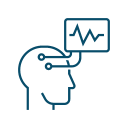What is Menopausal Non-Hormone Therapy?
NAMS divides non-hormone therapies used to treat the most common symptoms of perimenopause, primarily hot flashes and night sweats, into five categories. They are:
- lifestyle change
- Mind-body awareness techniques
- prescription therapies
- dietary supplements
- acupuncture, other treatments, and technologies
The growing interest in treating menopause symptoms has, unfortunately, provided an opportunity for scammers to sell unproven, and at times unethical or potentially dangerous, practices, technologies or supplements to ‘help’ desperate women.
The North American Menopause Society (NAMS) released a position statement in June 2023 to provide evidence-based guidance that can prevent the use of inappropriate or ineffective therapies and to support the use of effective ones. This position statement is aimed at clinicians, to keep them informed about what the scientific evidence shows with respect to the many non-hormonal (naturopathic) management options.
Herstasis has read the new position statement carefully and here we are helping to make it more accessible to our non-clinical readers.
In the June 2023 update, NAMS selected an advisory panel of clinicians and research experts in women’s health to review and evaluate the literature published since their 2015 Position Statement was published. This new information was used to reach consensus on their updated recommendations.
It is important to realize that NAMS recommendations are based on published scientific evidence. If NAMS guidance for clinicians and patients states that it does not recommend these treatments, it does not mean that there are no anecdotal benefits, just no credible scientific evidence that they improve perimenopause symptoms.

Recommended therapies to treat perimenopause symptoms, particularly vasomotor symptoms (hot flashes & night sweats):
-
• cognitive-behavioral therapy
• clinical hypnosis
• selective serotonin reuptake inhibitors (SSRIs) / serotonin-norepinephrine reuptake inhibitors (SNRIs)
• gabapentin
• fezolinetant (Veozah)
• oxybutynin
• weight loss
• stellate ganglion block
Not recommended therapies (therapies that are not supported by scientific evidence) include:
- • paced respiration
• supplements/herbal remedies
• cooling techniques
• avoiding triggers
• exercise
• yoga
• mindfulness-based intervention
• relaxation
• suvorexant
• soy foods and soy extracts
• soy metabolite equol
• cannabinoids
• acupuncture
• calibration of neural oscillations
• chiropractic interventions
• clonidine
• dietary modification
• pregabalin
This expert panel used the strength of scientific evidence in published papers to assign a level of support.
Level 1 = good and consistent support
Level 2 = limited or inconsistent evidence
Level 3 = no published evidence, support is by means of consensus and medical expert opinion
| Lifestyle | ||
|---|---|---|
| Therapy Name | Recommended (Y / N) | Evidence Level |
Cooling techniques
| N – research has found no measurable changes in the number or duration of hot flashes & night sweats based on these cooling techniques | Lvl 2 |
Avoiding Triggers
| N – There are no clinical trials assessing the effects of avoiding specific triggers for the alleviation of VMS. | Lvl 2 |
| Exercise and Yoga | N – there are other health benefits associated with exercise or yoga, but little evidence supporting them for the treatment of VMS. | Lvl 2 |
| Dietary modification | N – credible research evaluating the relationship of diet and VMS is limited, although individual studies have shown some reductions in the severity of hot flashes & night sweats from dietary modification. | Lvl 3 |
| Weight Loss | Y – Evidence suggests that the role of adiposity (fat) and weight loss may vary depending on age or menopause stage. Specifically, being overweight seems to be a greater risk factor for hot flashes & night sweats during perimenopause and early postmenopause but not when women are older or are later in post-menopause. This means weight loss may have greater effects in reducing VMS when women are earlier in the transition. | Lvls 2 – 3 |
| Mind-Body Techniques | ||
|---|---|---|
| Therapy Name | Recommended (Y / N) | Level of Evidence (1-3) |
| Cognitive-Behavioural Therapy (CBT) | Y – studies support CBT reducing the bother and interference of hot flashes & night sweats for both survivors of breast cancer and menopausal women. | Lvl 1 |
Mindfulness-based interventions
| N – studies generally show positive effects in reducing menopause symptoms broadly, with mixed effects for hot flashes & night sweats specifically. However, these studies are limited by small size and/or limited control groups and most were not designed to consider menopausal symptoms (so perimenopausal women were not specifically enrolled). Future rigorously designed trials are needed to test the efficacy of MBI for menopausal symptoms. | Lvl 2 |
Hypnosis
| Y – studies show that clinical hypnosis is significantly better at reducing the frequency and severity of hot flashes and improving mood and sleep compared to no treatment. | Lvl 1 |
Paced Respiration
| N – one study (of only three) had women use a chest device to guide their slow, deep breathing practice at home for at least 15 minutes per day. This showed significantly less benefit than a control group assigned to music listening. The other studies showed no effect. | Lvl 2 |
| Relaxation | N – Evidence is limited and inconsistent on relaxation for hot flashes & night sweats | Lvl 2 |
| Prescription Therapies | ||
|---|---|---|
| Therapy Name | Recommended (Y / N) | Level of Evidence (1-3) |
| Selective serotonin reuptake inhibitors (SSRI) and serotonin-norepinephrine reuptake inhibitors (SNRI) | Y – Evidence exists that SSRIs and SNRIs are associated with mild to moderate improvements in hot flashes & night sweats, regardless of whether menopause is natural or surgical. | Lvl 1 |
| Gabapentinoids | Y – FDA approved as an antiepileptic drug, however, several studies show that gabapentinoids improve the frequency and severity of hot flashes & night sweats. | Lvl 1 |
| Pregabalin | N – FDA approved for the management of neuropathic pain and seizures. One study showed improvements in hot flashes & night sweats but an increase in dizziness and cognitive difficulties. | Lvl 3 |
| Clonidine | N – studies have shown modest benefits for hot flashes & night sweats compared to a placebo (nothing) but less beneficial than SSRIs, SNRIs, and gabapentin in reducing VMS. It is used infrequently because of side effects including low blood pressure, lightheadedness, headache, dry mouth, dizziness, sedation, and constipation. Sudden cessation can lead to significant elevations in blood pressure. | Lvls 1, 2, 3 |
| Oxybutynin | Y – used for the treatment of overactive bladder and urinary urge incontinence. Studies have shown that use significantly improves moderate to severe hot flashes & night sweats. Note that long-term use may be associated with cognitive decline. | Lvls 1, 2 |
| Suvorexant | N – used to reduce the severity of insomnia. One small study showed that it led to reductions in night sweats compared to a placebo and was well tolerated. Suvorexant did not improve daytime hot flashes. These limited results do not support its use for hot flashes & night sweats. | Lvl 2 |
| Neurokinin B antagonists (Fezolinetant (Veozah)) | Y – Fezolinetant (Veozah) is the only FDA approved drug in this class, however, elinzanetant is currently in the approval process. These nonhormonal drugs directly target the neural mechanism underlying hot flashes & night sweats. | Lvl 1 |
| Dietary Supplements | ||
|---|---|---|
|
||
| Therapy Name | Recommended (Y / N) | Level of Evidence (1-3) |
| Soy foods and soy extracts | N – most widely used isoflavone- containing food. Isoflavones are a type of phytochemical that bind to estrogen receptors (ERs) in animals and human beings. Research findings are mixed, with some studies showing improvements, some showing no change, and some showing less benefit than other treatments. – Note that few studies have considered whether study participants can actually metabolize soy, which is critical for its potential positive effects and only 35% of North American women can metabolize isoflavone into equol – the substance that is helpful as an estrogenic substance (a substance that binds to estrogen receptors, helpful as women’s estrogen levels are dropping during perimenopause). | Lvl 2 |
| Soy metabolite equol | N – Equol is a nonsteroidal estrogen that is produced from metabolizing (breaking down) soy food or supplement products. Few studies have considered whether study participants can actually metabolize soy, which is critical for its potential positive effects and only 35% of North American women can metabolize isoflavone into equol. Women who cannot produce equol after ingesting soy do not benefit from soy but would be expected to benefit from taking equol directly. | Lvl 2 |
| Pollen extract | N – A proprietary extract made from flower pollen has been available under the brand names Relizen, Serelys, Femal, and Femalen. One small study found that women showed a significant decrease in hot flashes & night sweats after 12 weeks’ use of pollen extract. However, expert opinion and limited research support a finding of ‘not recommended’. | Lvl 3 |
| Ammonium succinate | N – ammonium succinate is a water-soluble, colourless crystal with an acid taste. It is used to produce medicine, the manufacture of lacquers, to make perfume, and to prepare a highly efficient rust remover for as a chemical intermediate, in medicine outdoor construction steel and stone. Two small studies on the use of ammonium succinate found improvements in perimenopause symptoms such as poor sleep, fatigue, loss of interest in sex, joint and muscle pain, hot flashes & night sweats, and a decrease in anxiety compared with the placebo group. However, these results are based on manufacturer-sponsored clinical trials. | Lvl 2 |
| Lactobacillus acidophilus | N – Lactobacillus acidophilus is the most commonly used probiotic. The only small study done showed that quality of life (based on the Kupperman Index) improved after 12 weeks of use. The study has not been replicated. | Lvl 2 |
| Rhubarb | N – Siberian rhubarb (Rheum rhaponticum) is eaten and is used as a medicinal plant for constipation, diarrhea, and other gastrointestinal complaints. One study reported that at 12 weeks, the Menopause Rating Scale (MRS – a diagnostic tool that measures the severity of perimenopause symptoms) total score and each symptom within the scale (including hot flashes & night sweats) significantly improved compared to no treatment. These conclusions are limited because of the study design and low numbers of women completing the full study. | Lvl 2 |
| Black cohosh | N – Actaea racemosa L. (previously Cimicifugae racemosae), is the most purchased botanical for menopause symptoms. The active ingredients in black cohosh extract are unknown, and how it works in the body is unclear. Reports of possible liver damage have resulted in all black cohosh products carrying a warning statement: “Discontinue use and consult a healthcare practitioner if you have a liver disorder or develop symptoms of liver trouble, such as abdominal pain, dark urine, or jaundice.” Only a few studies have looked specifically at black cohosh, all with contradictory results. | Lvl 1 |
| Wild yam | N – One clinical trial found no significant benefit to yam cream, which is unsurprising because tested yam creams often do not contain any yam extract. Many contain unidentified steroids, including estrogens and progesterone. These additives may be harmful and studies do not support using yam cream. | Lvl 2 |
| Dong quai | N – The small studies done to date do not support Dong quai helping hot flashes & night sweats. There are safety concerns including possible sensitivity to light and sunlight, blood thinning and cancer causing properties. | Lvl 2 |
| Evening primrose | N – There has only been one published study and no benefit was found compared to a placebo. | Lvl 2 |
| Maca | N – Four studies showed improvements in scores from the Greene Climacteric Scale or the Kupperman Index. However, these studies had design, quality, and sample sizes issues and there was limited reporting of study data, so the existing evidence is not strong enough to support the use of maca for hot flashes & night sweats. | Lvl 2 |
| Ginseng | N – Researchers from two separate studies found no significant effect of ginseng on hot flashes & night sweats compared to no treatment. | Lvl 1 |
| Labisia pumila / Eurycoma longifolia (Nu-FemmeTM) | N – The roots of these plants are used in many different herbal remedies treating sexual dysfunction, ageing, malaria, cancer, diabetes, anxiety, aches, constipation, exercise recovery, fever, increased energy, increased strength, leukemia, osteoporosis, stress, syphilis, glandular swelling, erectile dysfunction (ED), male infertility, increasing sexual desire in healthy people, and boosting athletic performance. There is little research on how it works for any of these conditions. For hot flashes & night sweats, no significant differences have been found between treatment and no treatment groups. | Lvl 1 |
| Chasteberry (Vitex Agnus-Castus) | N – Plants from the genus Vitex (including chasteberry) are known to have estrogenic properties. However, studies done on chasteberry used different ingredients in the compounds making it impossible to conclude that it was chasteberry alone that improved hot flashes & night sweats. | Lvl 2 |
| Milk thistle | N – This herb is often used to treat fever and for kidney and spleen disease. A single study showed improvement in hot flashes and night sweats, but there were problems with the study design. | Lvl 2 |
| Omega-3 fatty acid | N – these supplements contain polyunsaturated fatty acids. Study results have been mixed or inconclusive and cannot support recommended usage for hot flashes & night sweats. | Lvl 2 |
| Vitamin E | N – There is very little evidence for vitamin E having significant benefit in reducing hot flashes & night sweats. | Lvl 1 |
| Cannabinoids | N – Despite the fact that one-quarter of women report having used or currently using marijuana to treat their menopause symptoms, research data is very limited. Because of this, its use cannot be recommended. | Lvl 2 |
| Other Treatments & Technologies | ||
|---|---|---|
| Therapy Name | Recommended (Y / N) | Level of Evidence (1-3) |
| Acupuncture | N – Research studies have shown that acupuncture does improve some menopause-related symptoms such as mood, sleep, and pain based on improvements in diagnostic tools including the Kupperman Index and the Greene Climacteric Scale, and improvement in quality-of-life measurements such as the Menopause-specific Quality of Life (MSQOL) survey. There was no difference found between treatment and no treatment for hot flashes & night sweats for natural or surgical menopause. | Lvl 1 |
| Stellate ganglion block | Y – Stellate ganglion blockade is a widely used treatment for pain management, including for migraine and complex regional pain syndrome. It involves injecting an anaesthetic agent into the spine at the front of the neck. How it works for hot flashes & night sweats is unclear. Despite this, studies show that it improves hot flash & night sweat frequency and severity. This is a procedure that involves risks and side effects. | Lvls 2, 3 |
| Calibration of neural oscillations | N – This is an acoustic stimulation neurotechnology where scalp sensors and software algorithms translate specific brain frequencies into audible tones of varying pitch in real time. These tones are immediately mirrored back via earbuds, allowing the brain to “listen to itself ” in an acoustic mirror. There is a total lack of controlled trials, so this treatment is not recommended. | Lvl 2 |
| Chiropractic intervention | N – There have been no clinical trials of chiropractic interventions for hot flashes & night sweats and survey data do not show an association between use of chiropracty and hot flashes & night sweats and VMS. | Lvl 2 |
Compiled References
[1] Bulun. Physiology and pathology of the female reproductive axis. William’s Textbook of Endocrinology, 14th edition. Elsevier, 2019.
[2] Minkin MJ. Menopause: Hormones, Lifestyle, and Optimizing Aging. Obstet Gynecol Clin North Am. 2019 Sep;46(3):501-514. doi: 10.1016/j.ogc.2019.04.008. Epub 2019 Jun 21. PMID: 31378291.
[3] Shan D, Zou L, Liu X, Shen Y, Cai Y, Zhang J. Efficacy and safety of gabapentin and pregabalin in patients with vasomotor symptoms: a systematic review and meta-analysis. Am J Obstet Gynecol. 2020 Jun;222(6):564-579.e12. doi: 10.1016/j.ajog.2019.12.011. Epub 2019 Dec 20. PMID: 31870736.
[4] Roberto A Leon-Ferre and others, Oxybutynin vs Placebo for Hot Flashes in Women With or Without Breast Cancer: A Randomized, Double-Blind Clinical Trial (ACCRU SC-1603), JNCI Cancer Spectrum, Volume 4, Issue 1, February 2020, pkz088, https://doi.org/10.1093/jncics/pkz088
[5] Rahman SA, Nathan MD, Wiley A, Crawford S, Cohn AY, Harder JA, Grant LK, Erickson A, Srivastava A, McCormick K, Bertisch SM, Winkelman JW, Joffe H. A double-blind, randomized, placebo-controlled trial of suvorexant for the treatment of vasomotor symptom-associated insomnia disorder in midlife women. Sleep. 2022 Mar 14;45(3):zsac007. doi: 10.1093/sleep/zsac007. PMID: 35022783.
[6] Umland EM, Falconieri L. Treatment options for vasomotor symptoms in menopause: focus on desvenlafaxine. Int J Womens Health. 2012;4:305-319. doi:10.2147/IJWH.S24614
[7] Modi M, Dhillo WS. Neurokinin 3 Receptor Antagonism: A Novel Treatment for Menopausal Hot Flushes. Neuroendocrinology. 2019;109(3):242-248. doi: 10.1159/000495889. Epub 2018 Nov 30. PMID: 30504731.
[8] Yeonsoo Sara Lee, BS, Christopher Wie, MD, Scott Pew, MD and Juliana M. Kling, MD, MPH. Stellate ganglion block as a treatment for vasomotor symptoms: Clinical application.
Cleveland Clinic Journal of Medicine March 2022, 89 (3) 147-153; DOI: https://doi.org/10.3949/ccjm.89a.21032
[9] Gerdes L, Gerdes P, Lee SW, H Tegeler C. HIRREM™: a noninvasive, allostatic methodology for relaxation and auto-calibration of neural oscillations. Brain Behav. 2013 Mar;3(2):193-205. doi: 10.1002/brb3.116. Epub 2013 Jan 14. PMID: 23532171; PMCID: PMC3607159.
[10] Tegeler CH, Tegeler CL, Cook JF, Lee SW, Pajewski NM. Reduction in menopause-related symptoms associated with use of a noninvasive neurotechnology for autocalibration of neural oscillations. Menopause. 2015 Jun;22(6):650-5. doi: 10.1097/GME.0000000000000422. PMID: 25668305; PMCID: PMC4448674.
Not AI generated.
Original content, last updated October 12, 2023.
© 2024 Herstasis® Health Foundation



